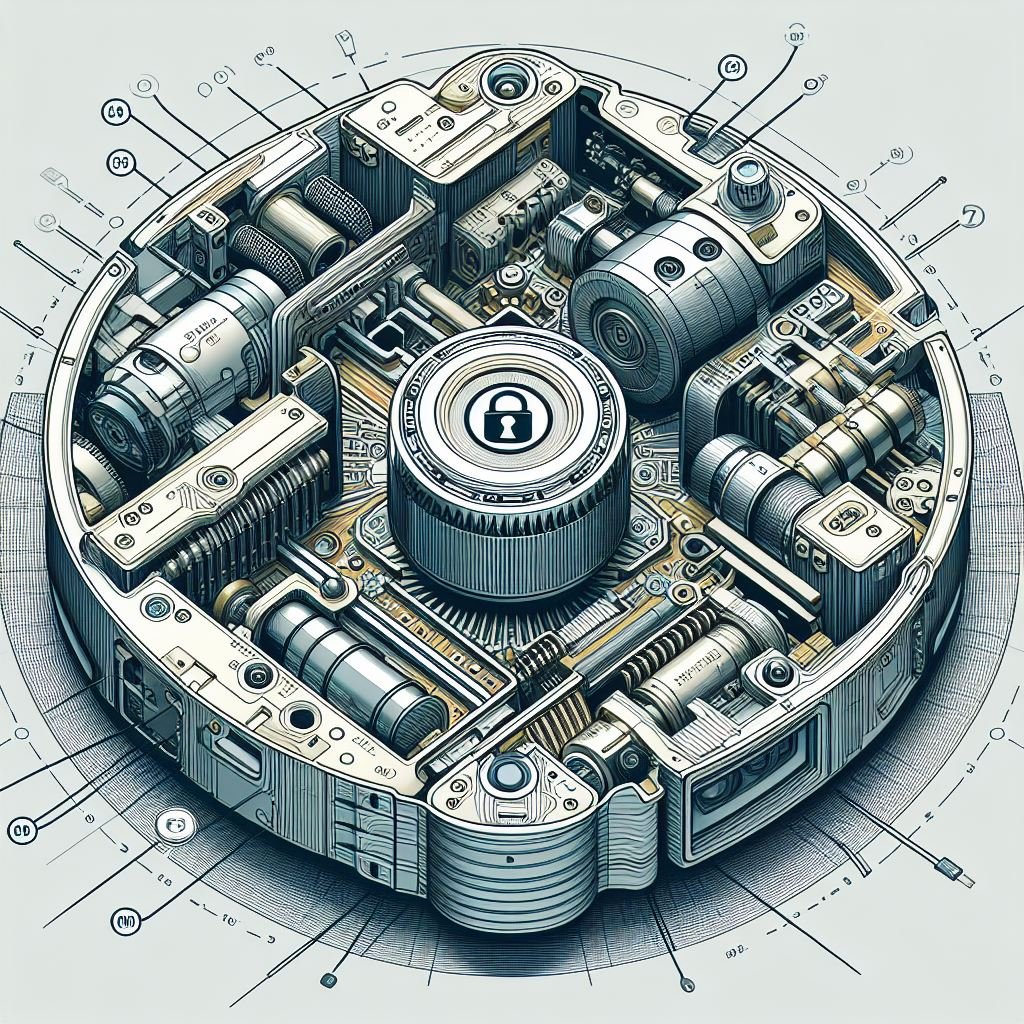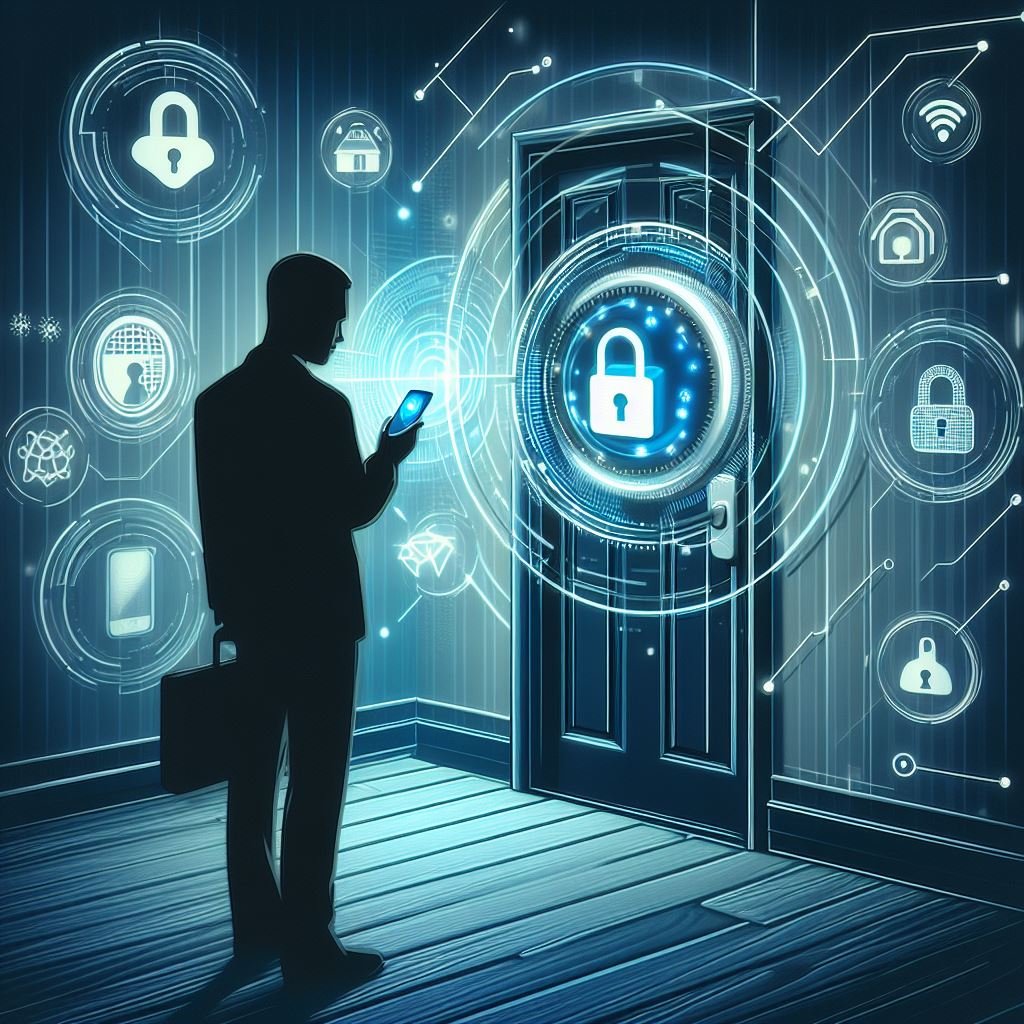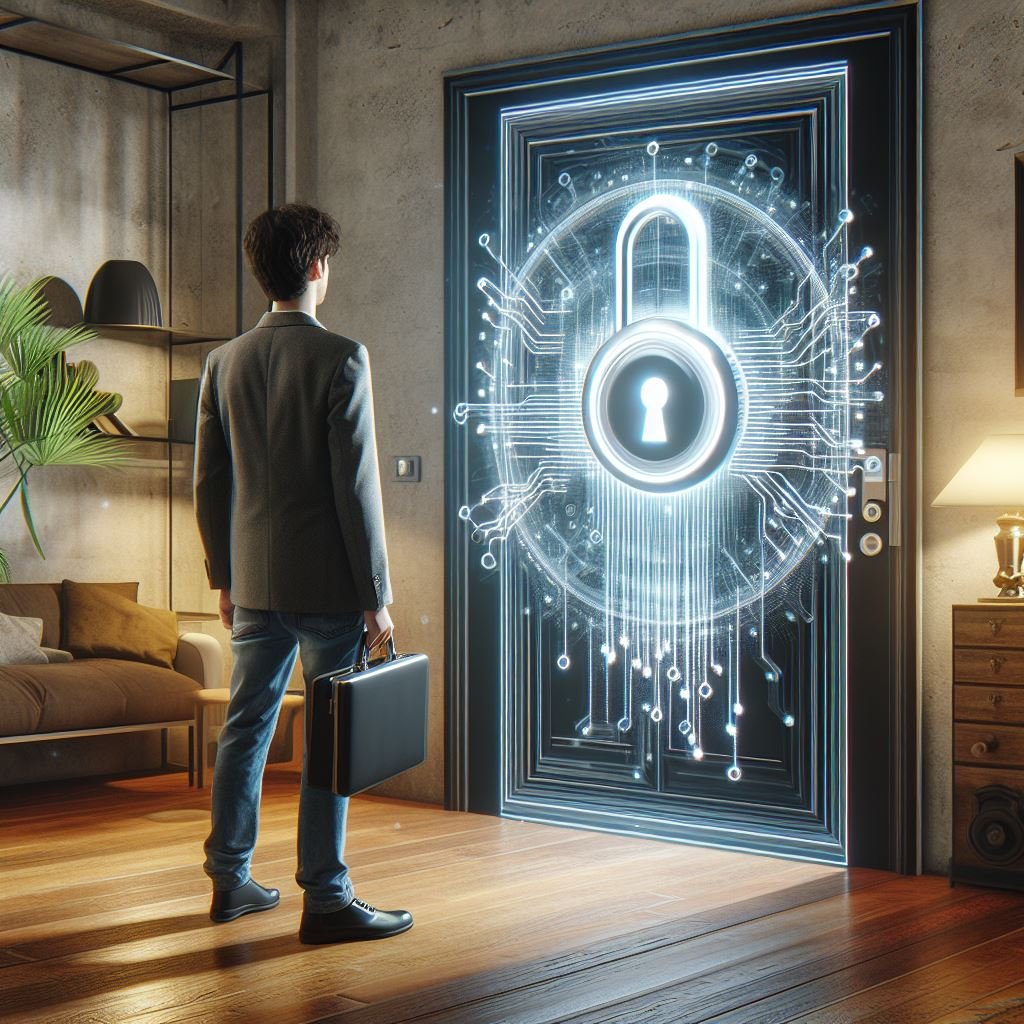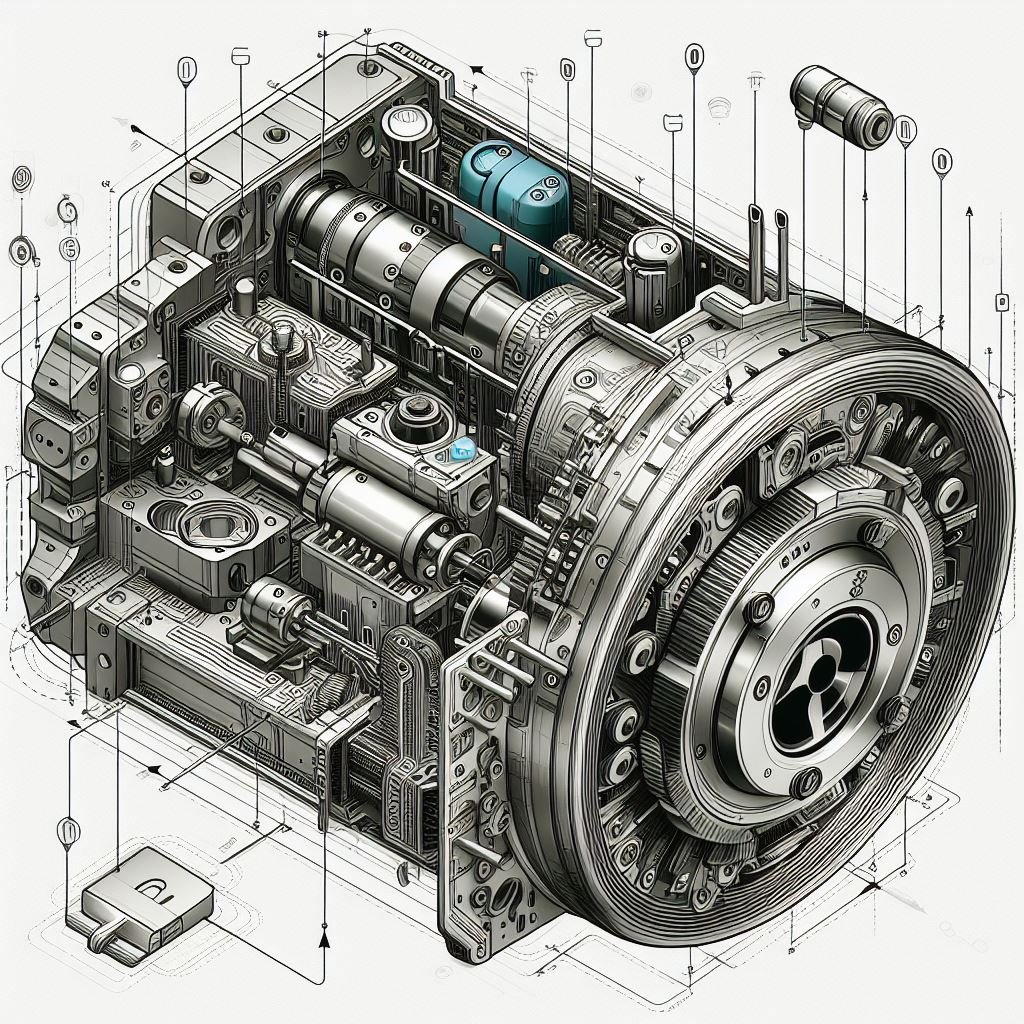Smart locks use a combination of physical locks, electronic or virtual keys, secure Bluetooth or Wi-Fi connection, and a mobile app for remote control. This advanced technology allows users to lock and unlock doors from anywhere using compatible devices such as smartphones or tablets.
With the convenience and enhanced security they provide, smart locks for homes are revolutionizing modern home and business security systems. In today’s digital age, smart locks are becoming increasingly popular due to their convenience and advanced security features. By integrating physical locks with electronic and digital components, smart locks offer a seamless and efficient way to control access to properties.
Table of Contents
Let’s delve into the intricate workings of smart locks and explore how this modern technology is transforming the concept of security.
How Smart Locks Work
Smart locks are innovative security devices that offer convenient and secure access control to homes and businesses. Understanding the technology behind smart locks can help users make informed decisions when choosing a modern security solution for home security.
Components Of A Smart Lock
A smart lock consists of several key components:
- Physical lock mechanism
- Electronic or virtual key access
- Secure Bluetooth or Wi-Fi connection
- Management mobile app
Functionality Of Smart Locks
Smart locks operate through a combination of hardware and software:
- Deadbolt mechanism for physical locking
- Motorized system for remote access control
- Wireless communication via Bluetooth or Wi-Fi
- Mobile applications for remote management
Users can remotely control door access using smartphones or tablets, enhancing security and convenience.
Technology Behind Smart Locks for Front Door

Smart locks are revolutionizing home security by offering advanced features that enhance convenience and safety. Understanding the technology behind smart locks provides insight into their remarkable functionality.
Wireless Communication Features
Smart locks utilize wireless communication technologies such as Bluetooth and Wi-Fi to enable seamless connectivity with mobile devices. This allows users to remotely control and monitor their locks from anywhere, enhancing convenience and security.
Remote Access Control
One of the key features of smart locks is the ability to grant remote access to individuals, such as family members, guests, or service providers, through a dedicated mobile app. This allows for convenient management of access permissions without the need for physical keys.
Security Concerns
Smart locks utilize electronic, digitally encrypted, or virtual keys for keyless entry, along with a secure Bluetooth or Wi-Fi connection and a management mobile app. The hardware typically includes a deadbolt mechanism, a motorized locking system, and wireless communication features such as Bluetooth and Wi-Fi connectivity, allowing for remote door access control through compatible devices.
Despite the convenience, smart locks can be vulnerable to hacking and physical tampering, emphasizing the importance of understanding and addressing potential security threats.
Hacking Vulnerabilities
Smart locks can be vulnerable to hacking, just like any other wireless technology. Different connection types such as Bluetooth, Wi-Fi, and Z-wave may be susceptible to specialized hacking devices. Despite the availability of online information on hacking smart locks, successfully breaching them is no easy feat.
Physical Tampering Risks
Another concern with smart locks is the risk of physical tampering. Those relying on wireless communication, such as Bluetooth or Wi-Fi, can be susceptible to jamming or signal interception attacks. Additionally, intruders might attempt to physically manipulate the lock mechanism to gain unauthorized access.
Enhanced Security Features

Modern smart locks come equipped with advanced security features that provide an unparalleled level of protection for your home or business. These features include biometric authentication and facial recognition technology, ensuring that only authorized individuals can gain access to the premises.
Biometric Authentication
Biometric authentication methods, such as fingerprint scanners, have revolutionized the way we secure our properties. By using unique biological traits for identification, smart locks employing biometric authentication offer an incredibly secure and convenient access control solution. This advanced technology ensures that only authorized individuals, whose biometric data is registered in the system, can unlock the door, providing a high level of security that traditional keys or codes cannot match.
Facial Recognition Technology
Facial recognition technology takes security to a whole new level by using advanced algorithms to verify a person’s identity based on their facial features. When integrated into smart locks, this technology adds an extra layer of security, making it nearly impossible for unauthorized individuals to gain access. By analyzing unique facial characteristics, the smart lock can accurately authenticate the user, providing a seamless and secure entry process.
Power Sources Of Smart Locks
Smart locks are revolutionizing home security by offering advanced features and convenience. Understanding the power sources of smart locks is crucial for ensuring their reliable operation. Let’s delve into the secrets behind the power sources that drive these modern security solutions.
Reliability Of Smart Lock Power Sources
Smart locks rely on various power sources to ensure uninterrupted functionality. The reliability of these power sources directly impacts the overall security of the lock system. Therefore, it’s essential to explore the different power options available for smart locks to make informed decisions.
Exploring Different Power Options
Smart locks are powered by different sources, each with its unique characteristics and benefits. Let’s take a closer look at the various power options commonly used in smart lock systems:
- Battery Power: Many smart locks utilize standard or rechargeable batteries as their primary power source. This option offers flexibility and ease of installation, ensuring that the lock remains operational even during power outages.
- Hardwired Power: Some smart locks can be hardwired into the existing electrical system of a property. This setup ensures a continuous power supply to the lock, eliminating the need for regular battery replacements.
- Solar Power: A sustainable and eco-friendly option, solar-powered smart locks harness energy from the sun to operate efficiently. This feature reduces the environmental impact and provides a reliable power source for the lock.
Installation And Maintenance
Installing and maintaining a smart lock is essential for ensuring the security and functionality of your modern security system. Let’s delve into the key aspects of installation and maintenance below:
Ease Of Installation
- Easy DIY installation process
- No need for complex wiring
- Step-by-step instructions included
Installing a smart lock is a breeze with its user-friendly setup, making it accessible for all users.
Secure Environment Maintenance
- Regularly update lock firmware
- Check battery levels periodically
- Ensure secure network connections
Maintaining a secure environment with your smart lock involves simple yet crucial tasks to enhance its performance and reliability.
also read: Are Smart Locks Worth It? Pros, Cons, And Honest Insights
Keyless Entry Systems
Smart locks operate using a combination of a physical lock, an electronic or virtual key for keyless entry, a secure Bluetooth or Wi-Fi connection, and a mobile app for management. The hardware typically includes a deadbolt mechanism, a motorized locking system, and wireless communication features like Bluetooth and Wi-Fi, allowing remote door access control via smartphones or tablets.

Functioning Of Keyless Locks
Keyless entry systems use a combination of electronic components to provide secure access without traditional keys. These systems rely on methods such as biometrics, PIN codes, RFID cards, or mobile apps to authenticate users and unlock doors.
Advantages In Contemporary Security
Keyless locks offer enhanced security, convenience, and flexibility compared to traditional lock and key systems. They provide real-time access control, audit trails, and the ability to remotely manage access permissions. Additionally, keyless entry systems eliminate the risks associated with lost or stolen keys, enhancing overall security levels.
Setting New Standards

Revolutionizing security, smart locks operate through a blend of deadbolt mechanisms, motorized locks, and wireless connectivity, like Bluetooth and Wi-Fi. Users can remotely manage door access from anywhere via mobile apps on smartphones or tablets, ensuring convenience and enhanced protection for modern homes.
Keyless Entry In Commercial Security
Setting new standards in security, smart locks have revolutionized the way we secure our homes and businesses. One of the most significant advancements that smart locks bring to the table is keyless entry. This means that you no longer need a physical key to unlock your doors. Instead, you can use a virtual key, biometric authentication, or a mobile app to grant access to authorized personnel. This feature is particularly useful for businesses that need to grant access to multiple employees or contractors while keeping their premises secure.
Modern Convenience And Security
Smart locks offer a level of convenience and security that traditional locks simply cannot match. With a smart lock, you can monitor and control access to your property remotely, from anywhere in the world. You can receive real-time notifications when someone enters or exits your property, and you can grant or revoke access to your property with a few taps on your smartphone. Plus, smart locks eliminate the need for physical keys, which can be lost or stolen, and they offer advanced security features like biometric authentication methods such as fingerprint scanners or facial recognition technology.
In conclusion, smart locks are a game-changer when it comes to modern security. By setting new standards in security, they provide keyless entry and advanced security features that traditional locks cannot match. Whether you are a homeowner, a business owner, or a property manager, smart locks offer the convenience, security, and peace of mind that you need to keep your property safe and secure.
Future Of Smart Locks
As technology continues to advance, the future of smart locks is poised to revolutionize the way we think about security and access control. With innovative features and seamless integration with smart home systems, smart locks are set to become an essential component of modern living.
Technological Advancements
Smart locks are constantly evolving with cutting-edge technological advancements. From enhanced encryption algorithms to biometric authentication methods, these locks are becoming more secure and convenient than ever before.
Integration With Smart Home Systems
Smart locks are seamlessly integrated with smart home systems, allowing for centralized control and automation. With the ability to connect to virtual assistants like Alexa and Google Assistant, smart locks are becoming an integral part of the connected home ecosystem.

Frequently Asked Questions
What Is The Technology Behind Smart Locks?
The technology behind smart locks includes a physical lock, electronic or digital key, secure Bluetooth or Wi-Fi connection, and a management mobile app. The hardware consists of a deadbolt mechanism, a motorized locking system, and wireless communication features like Bluetooth and Wi-Fi.
Smart locks can be vulnerable to hacking and physical tampering, but some also have biometric authentication methods for added security. Smart locks offer keyless entry, making home security easy and hassle-free.
How Does Smartlock Work?
SmartLocks work using components like a deadbolt, a motorized system, and Bluetooth/Wi-Fi for remote access through mobile apps.
What Are The Security Issues With Smart Door Locks?
Smart door locks can be hacked through various wireless connections like Bluetooth and Wi-Fi, making them vulnerable to cyberattacks. Additionally, physical tampering is a threat, where intruders may try to jam signals or manipulate the lock mechanism.
What Are The Threats Of Smart Locks?
Smart locks can be vulnerable to hacking and physical tampering, making them susceptible to unauthorized entry. Hackers can exploit Bluetooth and Wi-Fi connections, while intruders may attempt to manipulate the lock mechanism. However, successful hacking is challenging, and some smart locks also offer biometric authentication for added security.
How Do Smart Locks Work?
Smart locks use a combination of physical lock components, digital keys, and wireless communication to provide keyless entry. Users can control access remotely through a mobile app.
Smart locks revolutionize security with keyless entry, Bluetooth connectivity, and remote access via mobile apps. The intricate technology behind smart locks ensures convenience without compromising safety. As we unravel the secrets of smart lock operation, we unveil a modern approach to safeguarding homes and businesses effectively.

